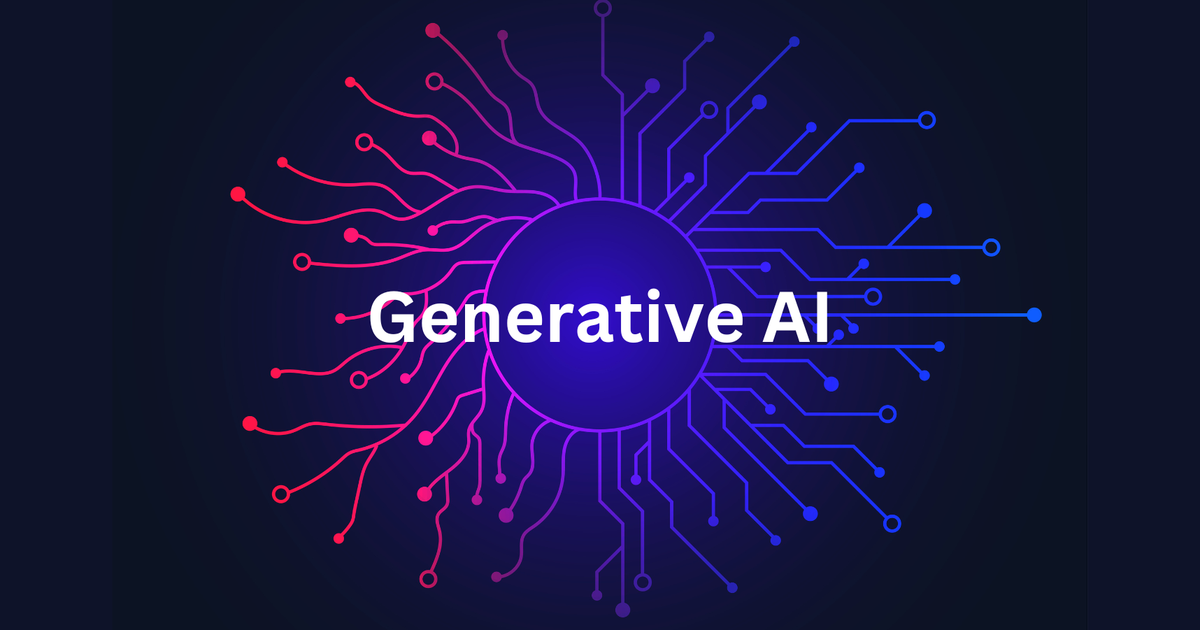Generative AI: An Overview
Generative AI, often abbreviated as GenAI, is a sub-field of Artificial Intelligence (AI) focused on generating new instances of data—such as text, images, code, and audio—that reflect the examples they were trained on. These systems leverage vast datasets to perform a wide range of language and data tasks, enabling them to generate content that closely mimics human-created outputs.
According to a report by Precedence Research, the Generative AI market is projected to reach USD 118.06 billion by 2032, growing at a Compound Annual Growth Rate (CAGR) of 27.02% from 2023 to 2032.

How Generative AI Works
Generative Language Models, the backbone of GenAI, are designed to produce new content based on input prompts. These models learn patterns and structures from their training data and apply this knowledge to generate novel outputs. Prominent types of generative models include:
-
Generative Adversarial Networks (GANs): Utilize two neural networks to generate and evaluate data.
-
Generative Pre-trained Transformers (GPTs): Advanced models like GPT-4, which enhance language processing capabilities.
-
Variational Autoencoders (VAEs): Used for generating data with a focus on maintaining variability.
-
Autoregressive Models: Generate content sequentially, predicting the next data point in a series.
Power of GenAI
GenAI offers numerous benefits. Some of them are listed below:
-
Text generation: Crafting text that mimics human writing, spanning diverse styles and tones.
-
Text completion: Providing suggestions to complete sentences or paragraphs.
-
Question answering: Answering based on the input.
-
Sentiment analysis: Determining the emotional tone.
-
Information extraction: Extracting the essential requested details.
-
Language translation: Translating text from one language to another.
-
Content summarization: Summarizing the contents like creating a summary of conversation, point-wise shorter text from lengthy input etc.
-
Text rephrasing: Offering improvements and edits for written content.
-
Creative writing: Poetry writing, essay writing, blog writing etc.
-
Code generation: Generating code snippets based on described scenario in the prompt.
-
Language tutoring: Assisting with grammar, vocabulary, and language learning.
-
Storytelling: Sharing imaginative stories.
Use cases of GenAI
Education: Generative AI can be used to create personalized educational content, such as custom quizzes, study materials, and interactive textbooks. It can adapt to individual learning styles, making education more engaging and effective.
Healthcare: In healthcare, generative AI assists with medical image analysis, helps predict patient outcomes, generates medical reports, and aids in drug discovery. It’s also valuable for designing treatment plans and handling general queries of patients.
Fashion: Fashion brands utilize generative AI to design clothing, generate style recommendations, and create virtual try-on experiences. It helps streamline the design process and tailor fashion choices to individual preferences.
Travel & Tourism: Generative AI is employed to create personalized travel itineraries, provide natural language assistance through chatbots, and even generate virtual travel experiences.
E-commerce: In e-commerce, AI generates product descriptions, enhances visual merchandising through image generation, and provides personalized shopping recommendations, thereby improving product discoverability and customer engagement.
Legal: Generative AI assists legal professionals by automating document generation, contract analysis, and legal research. It can draft legal documents based on the conditions in the prompt, making legal work more efficient.
Automobile: In the automotive industry, generative AI is used for getting suggestions for vehicle design, safety simulations, and the development of self-driving cars.
Banking & Finance: Generative AI assists in making data-driven decisions, assessing risks, and improving overall financial operations by financial forecasting, risk assessment, and fraud detection.
Information & Technology: In the IT sector, generative AI supports code generation, data analysis and decision making.
Reduced operational cost and increased productivity
Harnessing Generative AI leads to substantial reductions in operational expenses and heightened productivity. Through task automation, enhanced decision-making, and streamlined processes, GenAI technologies drive cost savings and increased operational efficiency, ultimately improving an organization’s financial performance.
There are many other pros of integrating GenAI with your business. You may consider giving it a go and Book a demo or Connect with us for designing a smart chatbot using Assistant – No code Conversational AI platform as per your business needs.
Wrapping up
The integration of chatbots with advanced natural language processing (NLP) abilities into business operations provides offering 24/7 customer support, rapid responses, and streamlined task automation. These technologies have the potential to revolutionize the way we interact with technology. They enhance customer satisfaction, boost operational efficiency, and provide valuable insights through personalized interactions, ultimately leading to increased revenue and long-term success for organizations.
Embracing AI in your organization is not just a strategic move but a necessity in the digital age. It ensures your business remains competitive and customer-centric while staying at the forefront of innovation. Exploring chatbot integration and harnessing the transformative effects of generative AI is a crucial step in securing your position as a leader in your industry.
Strengthen your organization and explore the possibility of chatbot integration and effects of embracing AI with the expertise of the top AI experts at Rydot Infotech and Rydotintuit.



